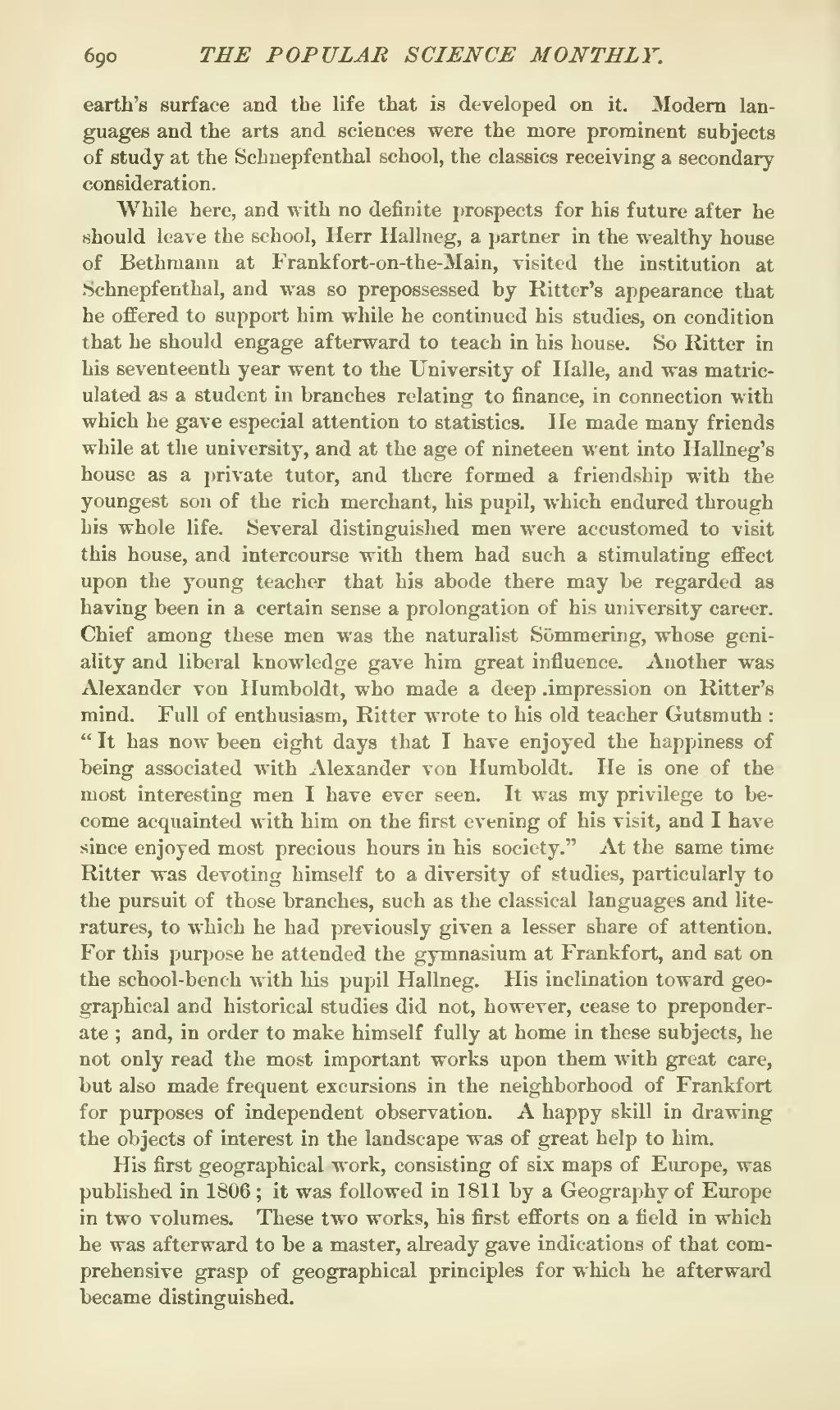earth's surface and the life that is developed on it. Modern languages and the arts and sciences were the more prominent subjects of study at the Schnepfenthal school, the classics receiving a secondary consideration.
While here, and with no definite prospects for his future after he should leave the school, Herr Hallneg, a partner in the wealthy house of Bethmann at Frankfort-on-the-Main, visited the institution at Schnepfenthal, and was so prepossessed by Ritter's appearance that he offered to support him while he continued his studies, on condition that he should engage afterward to teach in his house. So Ritter in his seventeenth year went to the University of Halle, and was matriculated as a student in branches relating to finance, in connection with which he gave especial attention to statistics. He made many friends while at the university, and at the age of nineteen went into Hallneg's house as a private tutor, and there formed a friendship with the youngest son of the rich merchant, his pupil, which endured through his whole life. Several distinguished men were accustomed to visit this house, and intercourse with them had such a stimulating effect upon the young teacher that his abode there may be regarded as having been in a certain sense a prolongation of his university career. Chief among these men was the naturalist Sömmering, whose geniality and liberal knowledge gave him great influence. Another was Alexander von Humboldt, who made a deep impression on Ritter's mind. Full of enthusiasm, Ritter wrote to his old teacher Gutsmuth: "It has now been eight days that I have enjoyed the happiness of being associated with Alexander von Humboldt. He is one of the most interesting men I have ever seen. It was my privilege to become acquainted with him on the first evening of his visit, and I have since enjoyed most precious hours in his society." At the same time Ritter was devoting himself to a diversity of studies, particularly to the pursuit of those branches, such as the classical languages and literatures, to which he had previously given a lesser share of attention. For this purpose he attended the gymnasium at Frankfort, and sat on the school-bench with his pupil Hallneg. His inclination toward geographical and historical studies did not, however, cease to preponderate; and, in order to make himself fully at home in these subjects, he not only read the most important works upon them with great care, but also made frequent excursions in the neighborhood of Frankfort for purposes of independent observation. A happy skill in drawing the objects of interest in the landscape was of great help to him.
His first geographical work, consisting of six maps of Europe, was published in 1806; it was followed in 1811 by a Geography of Europe in two volumes. These two works, his first efforts on a field in which he was afterward to be a master, already gave indications of that comprehensive grasp of geographical principles for which he afterward became distinguished.

